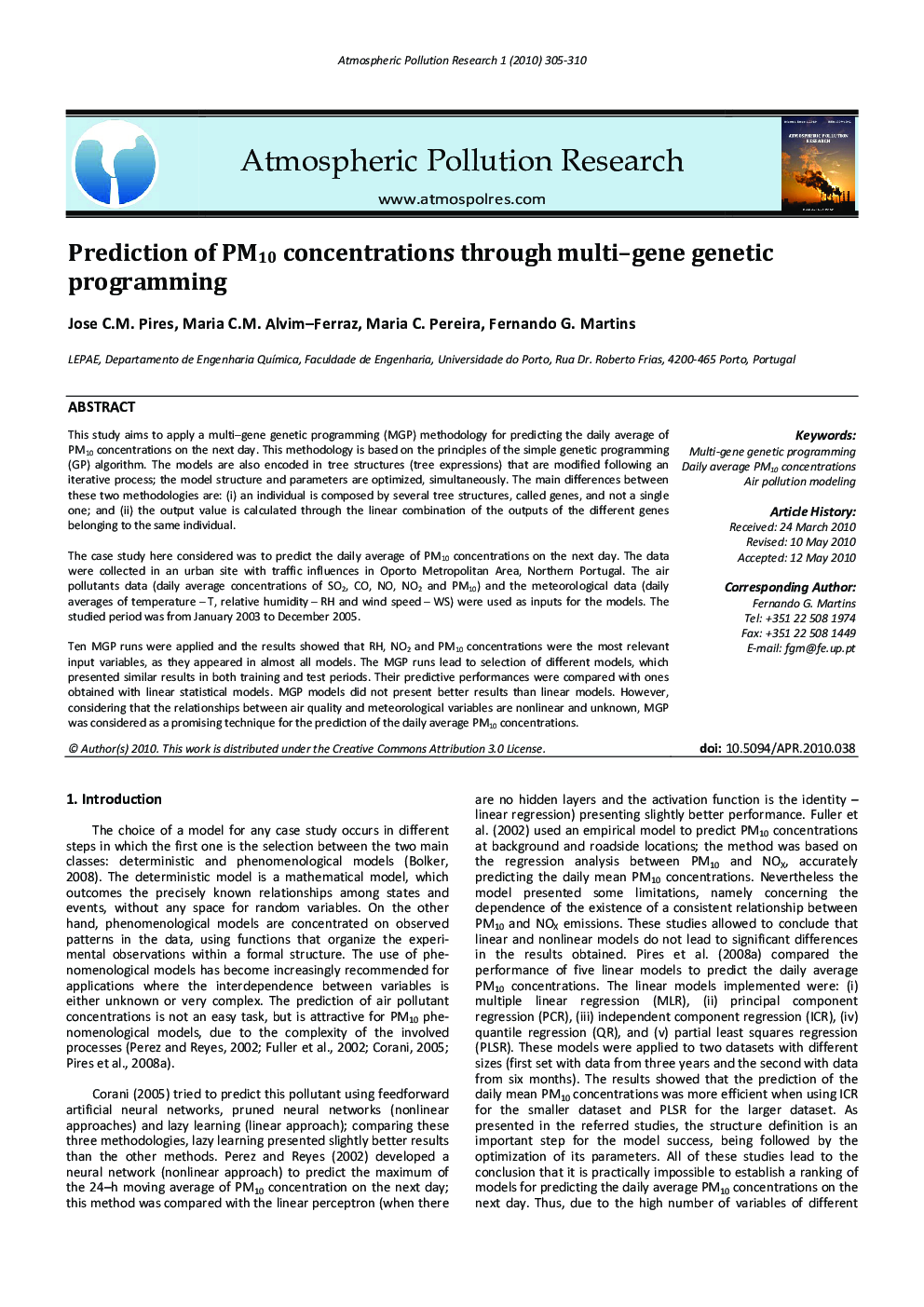| کد مقاله | کد نشریه | سال انتشار | مقاله انگلیسی | نسخه تمام متن |
|---|---|---|---|---|
| 4435043 | 1310541 | 2010 | 6 صفحه PDF | دانلود رایگان |

This study aims to apply a multi–gene genetic programming (MGP) methodology for predicting the daily average of PM10 concentrations on the next day. This methodology is based on the principles of the simple genetic programming (GP) algorithm. The models are also encoded in tree structures (tree expressions) that are modified following an iterative process; the model structure and parameters are optimized, simultaneously. The main differences between these two methodologies are: (i) an individual is composed by several tree structures, called genes, and not a single one; and (ii) the output value is calculated through the linear combination of the outputs of the different genes belonging to the same individual.The case study here considered was to predict the daily average of PM10 concentrations on the next day. The data were collected in an urban site with traffic influences in Oporto Metropolitan Area, Northern Portugal. The air pollutants data (daily average concentrations of SO2, CO, NO, NO2 and PM10) and the meteorological data (daily averages of temperature – T, relative humidity – RH and wind speed – WS) were used as inputs for the models. The studied period was from January 2003 to December 2005.Ten MGP runs were applied and the results showed that RH, NO2 and PM10 concentrations were the most relevant input variables, as they appeared in almost all models. The MGP runs lead to selection of different models, which presented similar results in both training and test periods. Their predictive performances were compared with ones obtained with linear statistical models. MGP models did not present better results than linear models. However, considering that the relationships between air quality and meteorological variables are nonlinear and unknown, MGP was considered as a promising technique for the prediction of the daily average PM10 concentrations.
Journal: Atmospheric Pollution Research - Volume 1, Issue 4, October 2010, Pages 305–310